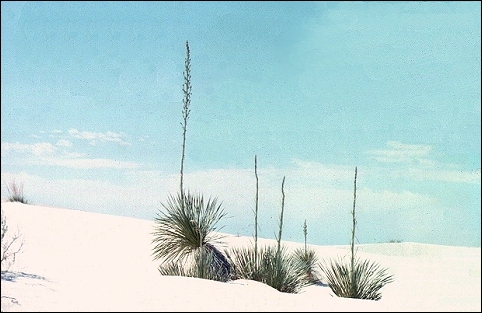

Life in the desert can be tough, but can you imagine life on the sand dunes? The Chihuahuan Desert has plenty of them—perhaps the most spectacular being the gypsum sands found in White Sands National Monument in New Mexico.
One problem for plants that live on the dunes is that the sands hold
few nutrients, but perhaps the biggest challenge is that these sands are constantly
shifting. A dune doesn't stay in the same place, and over weeks or years, the
entire arrangement of dunes can change! A plant trying to live here might soon find
itself buried in sand, unable to reach the light and air it needs to survive. Yet,
several plants have found a way to overcome the odds. The soaptree yucca can grow
incredibly fast! As the sands begin to bury it, the stems grow longer and longer, up to
a foot a year! Other plants are only temporary intruders, staying between the dunes as
long as they can before returning their territory to the shifting sands.
 <<br
clear="all" />
<<br
clear="all" />
Listen to the Audio (mp3 format) as recorded by KTEP, Public Radio for the Southwest.
Contributor: Kodi R. Jeffery, Centennial Museum, University of Texas at El Paso.
Desert Diary is a joint production of the Centennial Museum and KTEP National Public Radio at the University of Texas at El Paso.

Soaptree Yucca (Yucca elata) at White Sands National Monument, New Mexico, in the process of being buried.